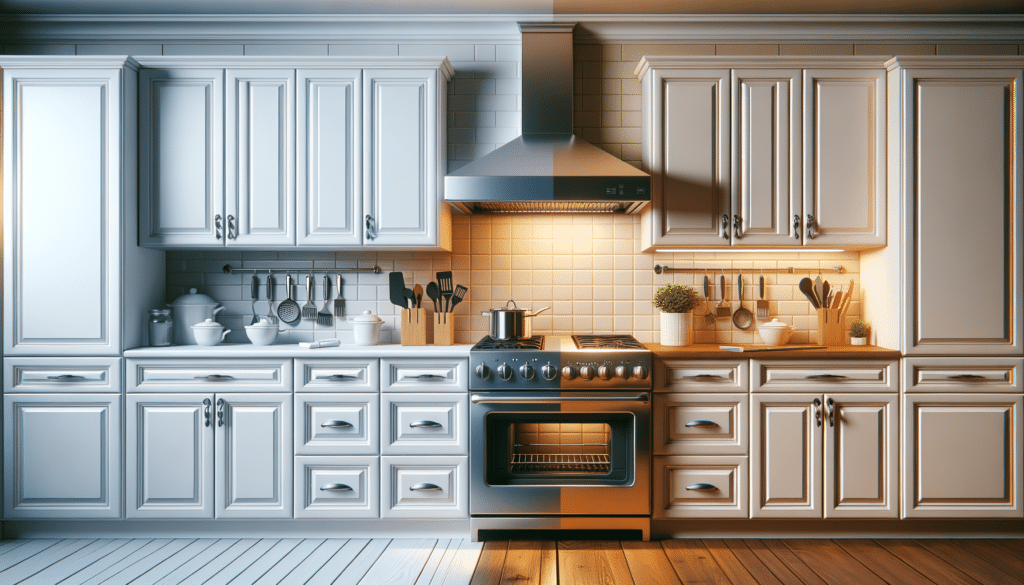Understanding the Benefits of Painting Kitchen Cabinets
Painting kitchen cabinets is an excellent way to rejuvenate the heart of your home without the expense of a full remodel. This approach offers numerous benefits that make it a popular choice among homeowners. Firstly, painting is significantly more cost-effective than replacing cabinets entirely. This allows you to allocate your budget to other areas of kitchen improvement, such as new appliances or countertops.
Moreover, painting provides a high degree of customization. With a wide array of colors and finishes available, you can tailor the look of your cabinets to suit your personal style and the overall aesthetic of your home. Whether you prefer a modern, sleek look or a more traditional, rustic feel, painting allows you to achieve it.
Another advantage is the relatively short timeframe needed to complete the project. Unlike a full kitchen renovation, which can take weeks or even months, painting cabinets can be accomplished in a matter of days. This minimizes disruption to your daily life, allowing you to enjoy your new kitchen sooner.
In addition to aesthetic improvements, painting can also protect your cabinets. High-quality paint can provide a durable finish that resists stains and moisture, extending the life of your cabinets. This is particularly beneficial in a kitchen environment, where cabinets are exposed to humidity and frequent use.
Key benefits of painting kitchen cabinets include:
- Cost-effectiveness compared to full replacement
- Customization with a variety of colors and finishes
- Quick project completion
- Durability and protection for cabinets
Preparing Your Kitchen for Cabinet Painting
Preparation is crucial to achieving a professional-looking finish when painting kitchen cabinets. The first step is to remove all cabinet doors, drawers, and hardware. This allows you to paint each component individually, ensuring even coverage and a flawless finish.
Once the cabinets are disassembled, cleaning is essential. Over time, kitchen cabinets accumulate grease, grime, and dust, which can prevent paint from adhering properly. Use a degreasing cleaner to thoroughly clean all surfaces, paying special attention to corners and crevices.
Next, sanding is required to create a smooth surface for the paint to adhere to. Use a medium-grit sandpaper to lightly sand the surfaces, removing any old finish or rough spots. After sanding, wipe down the cabinets with a damp cloth to remove any dust.
Priming is the final step in preparation. A good quality primer will help the paint adhere better and provide a uniform base color. Apply the primer evenly, allowing it to dry completely before proceeding with the paint.
Consider these essential preparation steps:
- Remove cabinet doors, drawers, and hardware
- Thoroughly clean with a degreasing cleaner
- Sand surfaces to ensure smoothness
- Apply a high-quality primer
Choosing the Right Paint and Tools
Selecting the right paint and tools is crucial for achieving a durable and attractive finish on your kitchen cabinets. When it comes to paint, you have several options. Latex paint is a popular choice due to its ease of use and quick drying time. It is also less prone to yellowing over time, making it ideal for kitchens with a lot of natural light.
Alternatively, oil-based paints offer a smoother finish and are highly durable. However, they require more drying time and proper ventilation during application. Whichever type you choose, ensure it’s specifically formulated for cabinets to withstand the wear and tear of a kitchen environment.
In terms of tools, a combination of brushes and rollers will give you the best results. Use a high-quality brush for detailed areas and edges, and a foam roller for larger surfaces to achieve a smooth, even finish. Additionally, consider using a paint sprayer for a professional-grade finish, especially if you’re covering a large area.
Essential tips for choosing paint and tools include:
- Consider latex or oil-based paint
- Use brushes for detailed areas
- Employ foam rollers for smooth surfaces
- Opt for a paint sprayer for large areas
Step-by-Step Guide to Painting Kitchen Cabinets
Painting kitchen cabinets involves several steps to ensure a professional finish. Start by applying the primer, ensuring even coverage. Allow it to dry completely before moving on to the paint. This is a critical step, as rushing can lead to uneven surfaces and visible brush strokes.
Once the primer is dry, apply the first coat of paint using a brush for edges and corners, and a roller for flat surfaces. Allow this coat to dry thoroughly before applying a second coat. Depending on the color and type of paint, a third coat may be necessary for full coverage.
After the final coat of paint has dried, reattach the cabinet doors and hardware. Take care to ensure everything is aligned properly for a polished look. This is also the time to replace any old or damaged hardware with new options that complement your updated cabinets.
Follow these steps for a successful cabinet painting project:
- Apply primer and let it dry completely
- Use a brush and roller for the first coat of paint
- Allow each coat to dry before applying the next
- Reattach doors and hardware carefully
Maintaining Your Newly Painted Cabinets
Once your kitchen cabinets are painted, maintenance is key to preserving their new look. Regular cleaning with a gentle, non-abrasive cleaner will help prevent dirt and grease buildup. Avoid using harsh chemicals or abrasive pads, as these can damage the paint.
Consider applying a clear protective topcoat for added durability, especially in high-traffic areas. This can help prevent scratches and chips, extending the life of your paint job.
Additionally, be mindful of moisture in the kitchen. Ensure proper ventilation to reduce humidity, which can affect the paint over time. Using a dehumidifier or regularly opening windows can help maintain an optimal environment for your cabinets.
Key maintenance tips include:
- Regular cleaning with non-abrasive products
- Consider a protective topcoat
- Ensure proper kitchen ventilation




